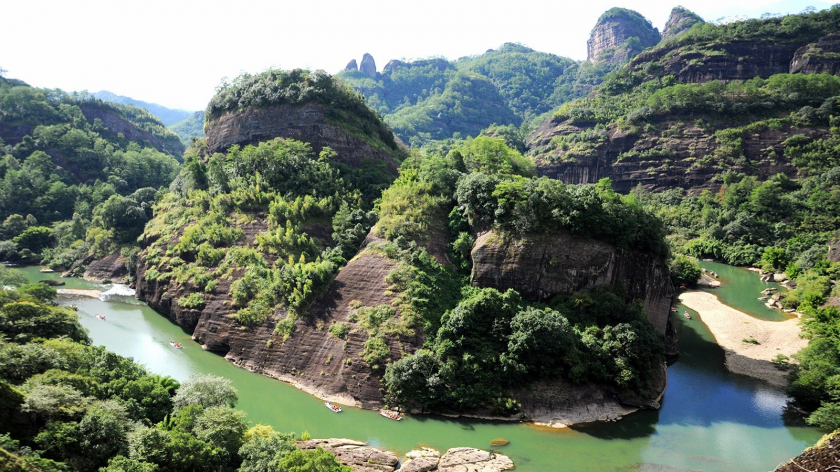This is the first time China has planned to establish a national park system with a scale stretching from northern Tibet to southern Hainan Island, the protected forest areas will be located in national parks with a total area of 230,000 km2 in the system.
China established its first nature reserve in 1956. Today, there are more than 10,000 such reserves in the country, which play an important role in maintaining biodiversity balance. However, Chinese authorities admit that there are some problems in managing these areas, namely unclear boundaries and responsibilities between different localities when managing the same reserve. Therefore, bringing national parks into the same system is considered the best solution at present.
The National Panda Park in this new system has been officially announced, this will be a safe area for pandas to live freely, and this place is also expected to be a destination attracting a large number of tourists to China every year.

Pandas in China's National Panda Park. - Photo: National Parks
According to a recent report, the Panda National Park will be expanded in the three provinces of Sichuan, Shaanxi, and Gansu, and will stretch across the Minshan, Gonglai, Daxiangling Mountains and then the Qinling Mountains. This area is the natural habitat of pandas, with more than 75% of them being wild pandas.
Meanwhile, the area between Jilin and Heilongjiang provinces will be home to the Northeast China Tiger and Leopard National Park, the only area in China where both tigers and Siberian leopards are living. Chinese officials have set up “livelihood projects” for people in the area, including building villages, facilitating livestock farming and training in alternative agriculture.

Siberian tiger at Northeast Tiger and Leopard National Park. - Photo: VCG photo
In addition, Hainan Island is China's leading rainforest reserve, and is also the only place in the world where the Hainan black gibbon exists. The Hainan Rainforest National Park was established to protect this animal and its habitat.

The Hainan black gibbon is one of the rarest mammals in the world. - Photo: Xinhua - Jiang Enyu
Other national parks focus on a wide range of animals rather than one specific species. For example, Wuyishan National Park in Fujian Province was created by merging the Fujian Mountain Nature Reserve, Wuyishan Scenic Area and Jiuquan River Nature Reserve into one national park under joint management. It is considered a “gene bank” for many of China’s rare and endangered animal species.

Wuyishan National Park is a popular tourist destination. - Photo: Internet
Likewise, Sanjiangyuan National Park on the Qinghai-Tibet Plateau is also an important center of biodiversity, especially as the interior faces challenges from climate change. The area is the source of three of China’s largest and most important rivers: the Yellow River, the Yangtze River, and the Lancang (Mekong) River.

An area of Tam Giang Nguyen National Park. - Photo: Internet
According to China's State Forestry Administration, Sanjiangyuan National Park has hired 17,200 herders to work as "ecological managers" or rangers there, each guaranteed an annual income of up to 20,000 yuan (over 70 million VND).
The national park system has created a suitable habitat for the conservation of wildlife, while also creating favorable conditions for local people to live and work. Not stopping there, in large national parks, visitors will also have the opportunity to participate in tourism programs to see wildlife with their own eyes and enjoy the rich natural scenery here.






























